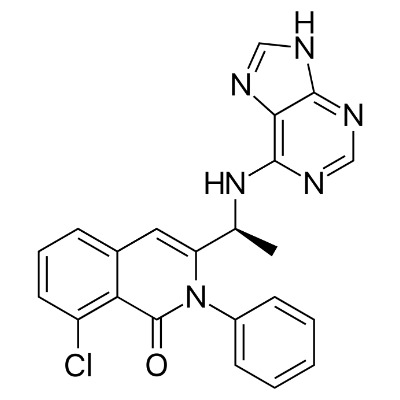
The deaths and severe symptoms caused by COVID-19 are, in part, due to a frenzy of activity that the viral infection causes in the immune system of patients. The virus triggers the release of large amounts of signaling proteins (cytokines) - called a 'cytokine storm'. The storm leads to inflammation, tissue damage and many other symptoms.
The cancer drug duvelisib (COPIKTRA®) is approved to treat some forms of lymphoma and leukemia. The drug works by blocking a protein that can cause activation of immune cells and produce cytokine storms.
Putting those two facts together has led to the idea that the cancer drug may be able to reduce the severity of COVID-19. The results seen in cancer patients make this a promising approach for both calming the 'storm' and improving the way the body fights off the virus.
